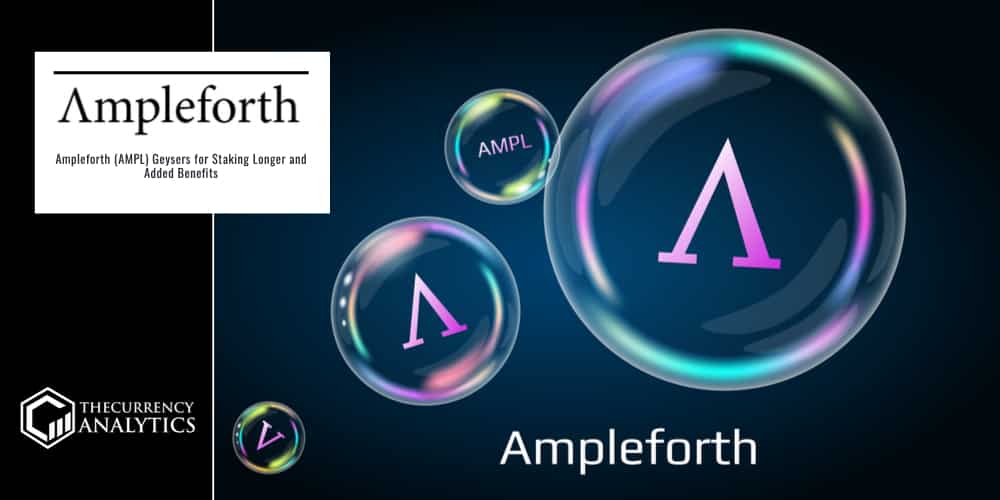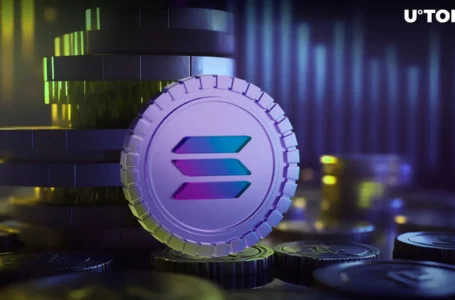
Ampleforth (AMPL) is a DeFi protocol which seeks to completely rethink the way money is designed both inside and outside of cryptocurrency. It simultaneously addresses the problems of classical finance and decentralized finance by creating a stable yet flexible currency which can accommodate both inflation and deflation.
Ampleforth has been notoriously difficult to grasp, and some have claimed that it requires 2-4 weeks of study to fully understand. Today, we are going to explain it to you in plain English from top to bottom in about 15 minutes.
What is Ampleforth?
Ampleforth (AMPL) is a cryptocurrency which adjusts its supply based on demand. Ampleforth is built on the Ethereum blockchain as an ERC-20 token and each AMPL token is referred to as an Ample. When demand goes up, the total supply of AMPL increases and when demand goes down its total supply decreases.
This is done to maintain purchasing power regardless of economic pressure (the same “dollar value”). These supply adjustments are made directly to all AMPL wallet balances which maintain the same percentage of the total AMPL supply regardless of the raw numerical change.
Ampleforth is often misunderstood to be a stablecoin. While the aim of Ampleforth is fundamentally to provide the same function as a stablecoin, it is not backed by US dollars like USDC nor any locked Ethereum assets like MakerDAO’s DAI stablecoin.
This can seem like a real brain teaser until you understand the large scale (macroeconomic) issues found in commodity money (gold, silver, etc.) and fiat money (USD, EUR, etc.) which the Ampleforth protocol fundamentally seeks to address.
History of Ampleforth
Ampleforth (AMPL) is the brainchild of Evan Kuo, a graduate of UC Berkley (mechanical engineering and computer science) and the former CEO of Pythagoras Pizza. His pizzeria made the news when it announced that it would be tokenizing its franchise in an attempt to “provide the same economic mobility” as tech startup employees for workers in the service industry.
In short, it would allow in-house employees, third-party delivery drivers, customers, and even affiliate marketers to earn tokens representing a share in Pythagoras Pizza and its profits for completing simple tasks.
This project drew the attention of investors at Pantera Capital who approached Kuo and introduced him to Brandon Iles, a former employee of Google and Uber who specialized in SEO and machine learning.
What is Ampleforth used for?
Although it is designed to be the ultimate form of money and eventually seeks to compete to be the world’s currency, Ampleforth (AMPL) is not exactly accepted as legal tender at your local grocery store (yet). For the time being, Ampleforth’s primary use cases are within cryptocurrency.
The first is as a cryptocurrency which is truly uncorrelated to Bitcoin and the second is as a stable store of value within DeFi applications. Ampleforth is not backed by anything, making it a more feasible long-term alternative to crypto-backed stablecoins like DAI and possibly even fiat-backed stablecoins like Tether.
Ampleforth’s last use-case is arbitrage. Put simply, cryptocurrency traders who are quick to react have the chance to make some serious profits during the short windows of time before the supply is reduced when the price increases, and have the chance to increase the allocation of AMPL tokens (as a percentage of the total supply) before the supply is increased when the price falls.
The profit potential of AMPL trading is quite immense when you realize that seasoned traders can make steady returns independent of the rest of the crypto market since the price of AMPL is not dependent on Bitcoin.
The Ampleforth ICO
Ampleforth (AMPL) raised nearly 10 million USD across 2 initial coin offerings (ICO) and 1 initial exchange offering (IEO). The 2 ICOs took place at the beginning and end of 2018 and raised 3 million and 1.75 million USD, respectively. The IEO took place on the Bitfinex exchange in June of 2019 and saw all AMPL tokens sell out in 11 seconds for a hefty 4.9 million USD. KYC was required to participate in the IEO.
The total amount of AMPL tokens sold across all 3 offerings was just under 16 million, with the first ICO selling 9.25 million AMPL tokens at a price of 0.32$USD, the second selling 1.65 million AMPL tokens at a price of 1.06$USD, and the IEO selling 5 million AMPL tokens at a price of .98$USD.
Oddly enough, the total supply of AMPL when it was created was 50 million. These tokens were allocated as follows: Ecosystem (23.2%), Seed Investors (18.5%), Series A Investors (3.3%), IEO (10%), Team and Advisors (25%), and the Ampleforth Treasury (20%).
How does Ampleforth work?
Oddly enough, Ampleforth (AMPL) is one of the few DeFi projects that is much easier to understand at the technical level than at the conceptual level. In a nutshell, the supply of Ampleforth is modified on a daily basis (at 1pm EST to be exact) to match demand using a smart contract (rebase).
This smart contract uses the Chainlink price oracle along with its own Ampleforth oracle (which Chainlink helped build) to source price data from KuCoin and Bitfinex to check if the market price per AMPL is within the 0.96-1.06$USD range. This is known as the equilibrium range and is within 5% of 1$USD.
It is worth noting that the Ampleforth protocol refers its adjustments to the price of a 2019 US dollar. This means that unlike other stablecoins which are pegged to the US dollar, the price of each AMPL token will increase in USD value in the future since the US dollar has a year inflation rate of roughly 2-3%.
If the Ampleforth protocol were to refer its token price to “current” US dollars, it would experience the same 2-3% yearly loss in purchasing power as the US dollar. In short, it would defeat its purpose.
If the price of AMPL is greater than 1.06$USD, the supply will increase and if it is lower than 0.96$USD then the supply will decrease. These two states are referred to as expansion and contraction, respectively. Expansion or contraction continues until the market price per AMPL token settles within the equilibrium range.
This supply change is made gradually and initiated as if it were to take place over a 10-day period to “avoid unnecessary correction”. As mentioned at the beginning of this section, the estimated change to supply is recalculated every day.
Final Word
A currency that can be manipulated and has two thirds of its supply owned by its creators is not a viable candidate as a global currency.
The fact of the matter is that you can always find something to criticize in almost every cryptocurrency project, especially those involved in DeFi (we did not even discuss how changes in demand for Ampleforth (AMPL) could disrupt its use as a stable collateral asset within DeFi applications).
At the end of the day, projects like Ampleforth are the beta versions of the next generation of protocols and the possibilities they bring. To that end, Ampleforth has introduced a concept so unique and promising that it may just change the financial world forever.



















